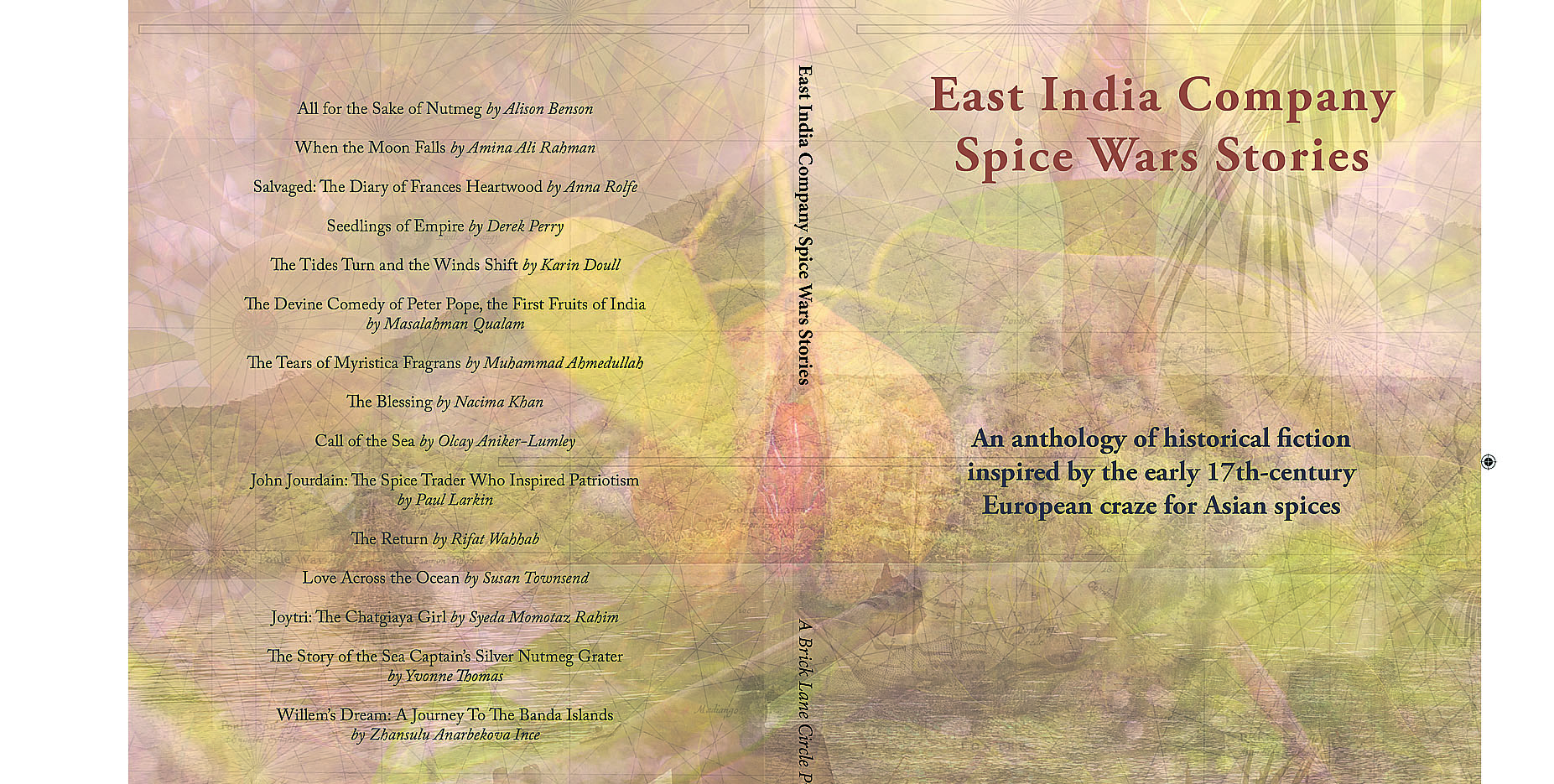
East India Company Spice Wars Stories: An anthology of historical fiction inspired by the early 17th-century European craze for Asian spices. A Brick Lane Circle Publication. 2024. Pages 364. Paperback.
The book was the culmination of a two-year-long project developed and delivered by the Brick Lane Circle. More than a dozen volunteer community participants, who were recruited, trained and supported produced fifteen historical fiction.
Brick Lane Circle has been working on initiatives and projects since 2007. Over the years, it has run discussions, seminars, walking tours, and projects where volunteer community participants recruited from London’s diverse population are trained and supported to deliver projects. The first project engaged young people aged 18-24 to explore, research, and write about East India Company sites around the East and City of London.
Although East London has long had a large, diverse ethnic population – many of whom originated from the Indian subcontinent ruled by Britain for nearly two centuries, the first one hundred years being through the East India Company – most were blissfully unaware of the historical links of places and spaces where they live, work, and move around to their countries of origin through the British Empire. The project sought to help start the process of changing this blissful state.
When reading journals and records of the early East India Company encounters in Asia, it was clear that what was experienced by all parties concerned through the interactions, negotiations, bartering, signing trade agreements, violence, competitions and conquests could not be fully grasped and understood through traditional research, writing and public presentations. As such, it was decided to engage the history through creative fiction.
The stories cover an important period of 1600-1625, the first quarter century of the English and Dutch in Asia. They competed and conflicted for Eastern spices and interacted and traded with the world of Asia. The European craze for Eastern spices – pepper, nutmeg, mace, and cloves – drove them to sail down the Atlantic and round the Cape of Good Hope to the waters and civilisations of the Indian Ocean and the Far East.
Peppers could be had in larger quantities than nutmeg, mace and cloves as they were grown in larger areas and many locations, including the Malabar Coast of India, Sumatra and Java. In contrast, cloves, nutmeg and mace were only available in remote small islands several thousand miles to the east of Jakarta and relatively much less in quantity than pepper. As such they were also many times more expansive.
The nutmeg fruit, from which the spices nutmeg and mace are derived, only grew in the Banda Islands Archipelago, which consists of eleven tiny pieces of land. To gain a monopoly of the nutmeg trade, the Dutch, who got there before the English, took over all the Banda Islands by force in 1621, ousting the English from the Rhun Islands, the only one they managed to gain control of in 1616. The result was a brutal war against the indigenous population, genocide and the replacement of its population by imported slaves from Bengal and the Coromandel Coast India.
The famous book Nathaniel’s Nutmeg chronicles the nearly four years of English possession of Rhun Island of the Bandas under the leadership of Captain Nathaniel Courthope and how the Dutch ousted them. Naturally, Banda Islands, the tragic nutmeg history and how the spice was highly expensive and sought after became a major source of interest for the community participants, many of whom built their stories around nutmeg. Other areas, such as the East India Company’s interactions with the Moghuls, their first Asian trading base in Banten (Bantam) and the Portuguese in Chittagong, were also explored through historical stories. All for the Sake of Nutmeg
Fiction stories include, When the Moon Falls, Salvaged: The Diary of Frances Heartwood, Seedlings of Empire by Derek Perry, The Tides Turn and the Winds Shift, The Devine Comedy of Peter Pope, the First Fruits of India, The Tears of Myristica Fragrans, The Blessing, Call of the Sea, John Jourdain: The Spice Trader Who Inspired Patriotism, The Return, Love Across the Ocean, Joytri: The Chatgiaya Girl, The Story of the Sea Captain’s Silver Nutmeg Grater, Willem’s Dream: A Journey To The Banda Islands.
In addition to the fiction stories, the book has an introduction and a background section, which contextualises the project and provides historical information. These sections are designed to help readers of the fiction to understand the history that has inspired the community participants and provided the ingredients for their stories.
Muhammad Ahmedullah